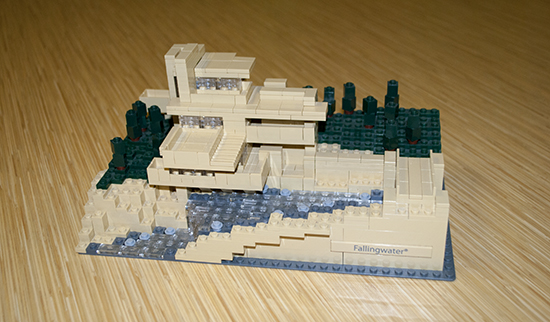
I have read and heard architecture described as timeless for many years, but I must confess; I don’t get it. Architectural publications attribute timelessness to some new building or other only to have most of us forget about them within a day or two, if not minutes. For example, look at the October 2013 issue of Architectural Record. Most people can name with the seven wonders of the ancient world and perhaps consider them timeless simply because we recognize them as built objects with a long history, however I am not so sure that is qualifies as timeless design. A pyramid is a good example of a structure that has been well understood as a burial site for the Pharoses of ancient Egypt. As such, the form was always associated with death and hidden treasure, rich guys who took their treasures with them. However, in the late 1980’s, I.M. Pei reimaged the pyramid in glass as the main entry into the Louvre in Paris, a spectacular design that redefined the form for many designers. Unfortunately, more recently the pyramid has been reinterpreted in Las Vegas as a casino … is nothing sacred? Or maybe not, isn’t a casino about the fantasy of becoming rich and taking it with you?
So what other creative evokes produce timelessness?
Is the Beatles She Loves You a song for all time … Casablanca the best movie ever made … any Ferrari the best drivers’ car ever created … the Mona Lisa the most magnificent painting ever to grace the wall of a museum?
The list can go on and on but what defines timeless?
Maybe things that are classic; I understand classic. Classic rock and roll weekend – get the Led out! A 64 ½ Ford Mustang or 57 Chevy – make mine a Nomad.
We are surrounded with what we are told are classic this and that’s. A white dinner jacket, the little black cocktail dress, but are they timeless? I think more of their time. Ever drive an antique car, fun for sure, but my old minivan beats them hands down for drivability, and where is the USB port and Bluetooth? This is where ever changing technology comes into play. If you are over 30 would you be caught dead in what you wore to your high school prom? Now we are talking fashion and taste. Classic can define a special, particular creative endeavor that is a direct result of its time and culture, cutting edge maybe, sometimes revolutionary, but locked in its cultural milieu.
Recently my wife and I traveled to Los Angeles to visit some old friends and take in a couple of sites, notably the Getty and the Disney Concert Hall. Our college aged son, who has never shown any interest in architecture despite all the trips we took him and his brothers on, requested that we bring him back a Lego model of one of these two relatively famous buildings. Unbeknownst to us he has started a collection; his single odd requirement is that the LEGO must be purchased on site. He only has the Guggenheim, so I’m not sure we can really call it a collection yet. If you’re aware of the limited architectural series that LEGO released, you already know my son was out of luck. That said, I would have thought any of Richard Meier’s building would be a perfect candidate for a stack of white plastic blocks. Frank Gehry on the other hand, sorry, LEGOs just don’t come in those shapes.
My son’s request got me thinking, who, to paraphrase Elaine Benes, of Seinfeld, determines which buildings are ‘LEGO-worthy’? Does this automatically crown them as a classic architectural building? Again, if you are familiar with the series, it includes the Seattle Space Needle and the former Sears Tower in Chicago. I’m not so sure these are classics. I think it has more to do with notable familiar buildings that are easy to assemble with their given components.
So, where can one look for official classic architectural buildings besides the numerous architectural history books and maybe the AIA 25 year award? What about the buildings on the Historic Register in a town near you? In the end, you probably have your own list of classic likes and dislikes in the various creative professions. Maybe you have a Maxwell Parish poster on your wall. Were any of those classics created with absolutely no connection to what was going on around them? It seems unlikely, particularly architecture, which is not a solitary occupation, but more of a team sport.
Everything is of its time, defining the period and I think you would be hard pressed to find anything that is truly timeless.


